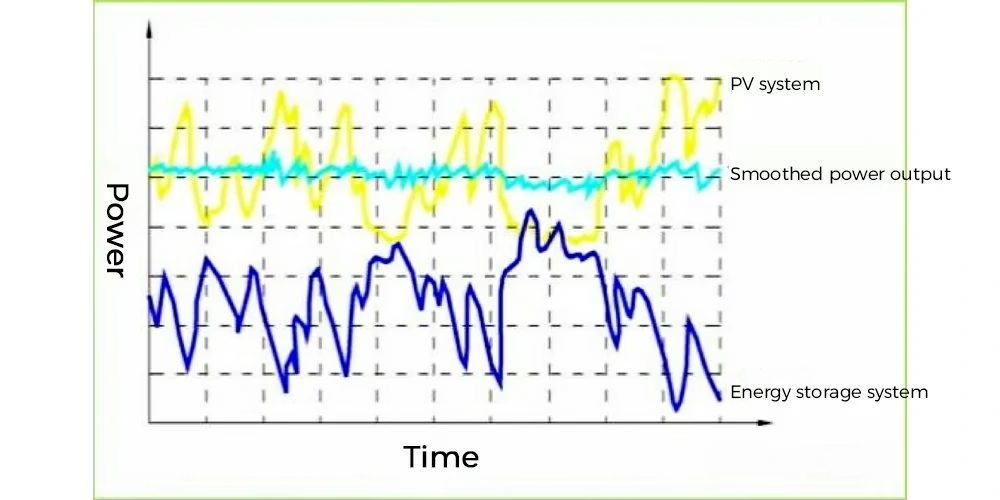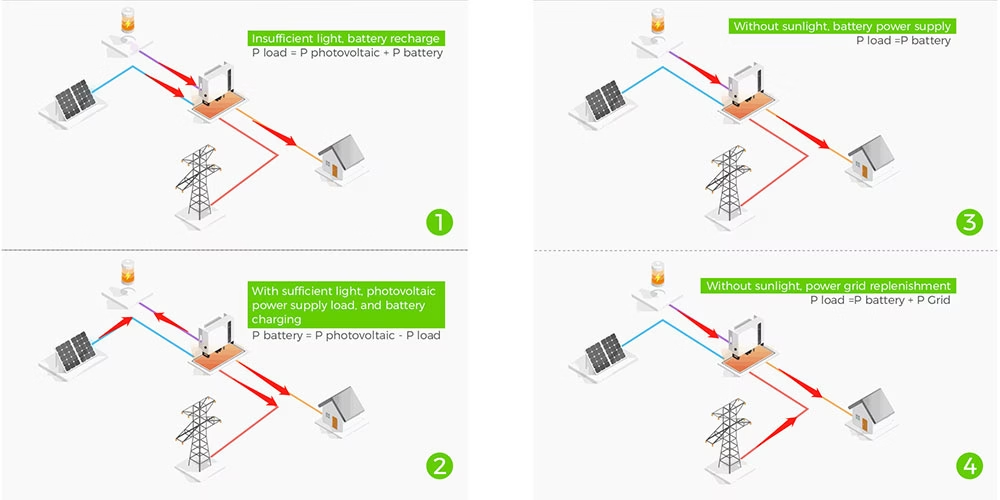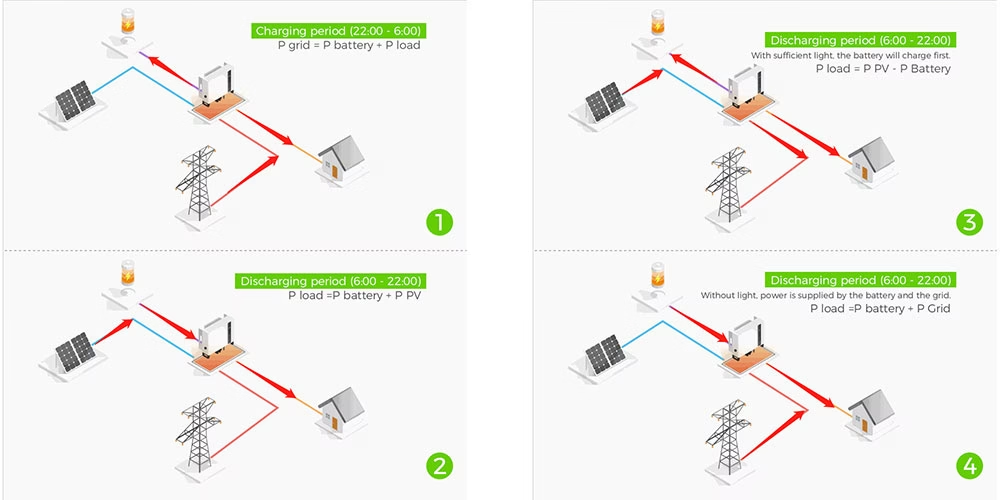Photovoltaic energy storage systems provide a reliable approach to achieving high-efficiency utilization of solar energy.
Photovoltaic power generation is an essential component of sustainable energy strategies. However, its output is often volatile and environmental conditions significantly influence it. To overcome this challenge, energy storage technology has accordingly emerged as a vital complement.
Specifically,a PV + battery system effectively integrates photovoltaic modules with energy storage units, which enables stable, efficient, and intelligent energy management. Let’s explore its key advantages below.
01. Optimize photovoltaic output curve
Due to its high dependency on environmental conditions, a PV + battery system exhibits significant output volatility and randomness. Consequently, these fluctuations adversely impact the power grid.
To address this issue, integrating energy storage devices enables the system to track the photovoltaic power generation output curve, shave peaks, fill valleys, and transform the photovoltaic output into a controllable profile. As a result, this approach greatly facilitates grid dispatch and minimizes its impact.
Furthermore, in regions experiencing solar power curtailment, the solar energy storage system can store part of the energy that the grid cannot absorb and feed it into the grid at a later time. Ultimately, this process effectively reduces energy waste caused by curtailment.

02. Increase Self-Consumption Rate
The photovoltaic system can be enhanced by adding an energy storage device, which is referred to as the PV + battery system. The photovoltaic power can be given priority to supply to the loads. Excess power can be stored in the battery.
When the photovoltaic power generation is insufficient or at night, the battery discharges to supply energy to the load, thereby increasing the self-generation and self-use rate of the photovoltaic system and achieving energy self-sufficiency.
At the same time, it saves electricity expenses, effectively responds to surges in electricity consumption, and avoids power outages.
The working logic is as follows:

03. Reduce Electricity Costs with Time-of-Use Pricing
Take the peak and off-peak electricity usage periods in a city as an example: the peak period is from 6:00 to 22:00, and the off-peak period is from 22:00 to 6:00 the next day.
Under normal circumstances, electricity prices during off-peak hours are much cheaper than electricity prices during peak hours. If users introduce pv + battery system and use photovoltaic power and peak-to-valley time-shifting methods, electricity costs can be effectively reduced.
Set the inverter to the timing charging mode: that is, 22:00-06:00 is the charging time period; 6:00-22:00 is the discharging time period. During the photovoltaic sufficient period, the battery charging priority; Low valleys to control the charging and discharging time of the battery, thereby increasing revenue.
The working logic is as follows:

04. Enhance Microgrid Stability
For areas without electricity, power shortages or offshore islands, the micro-grid established through photovoltaics and energy storage can provide stable electricity.
Reduce noise and environmental pollution caused by traditional energy sources, and the cost of power supply is lower, more economical and reliable.

